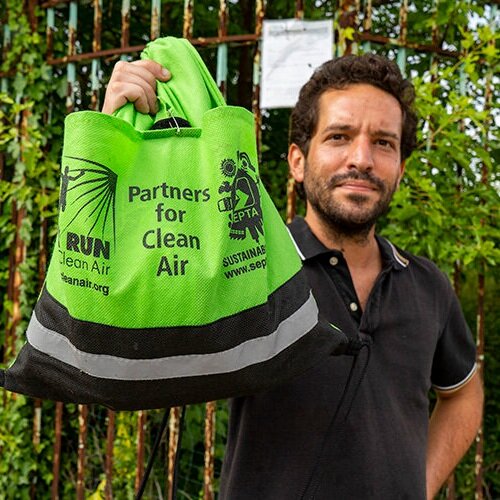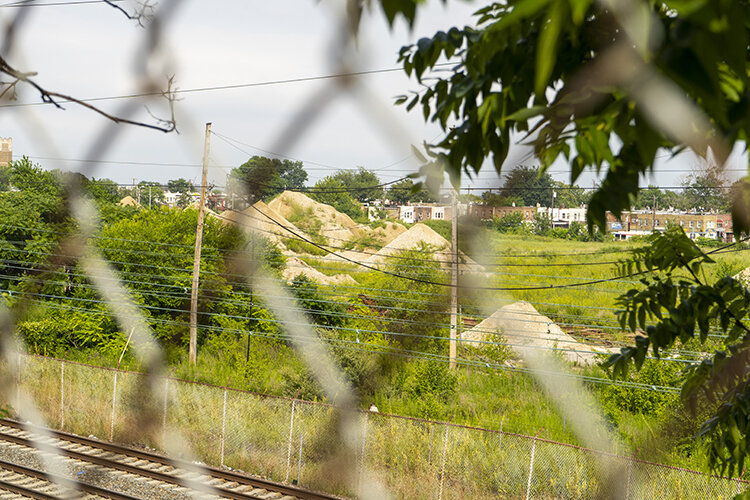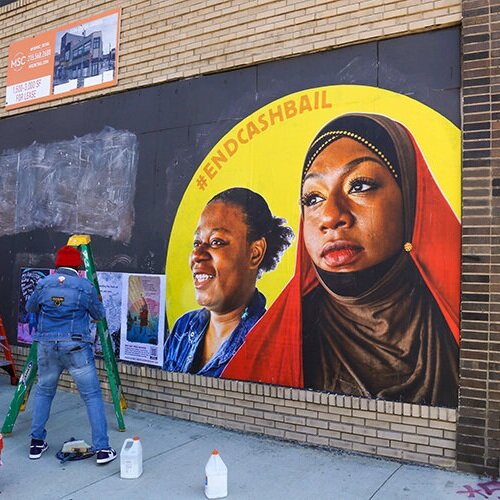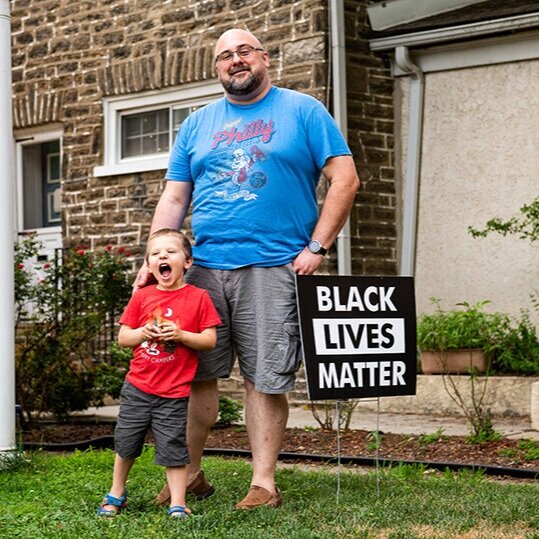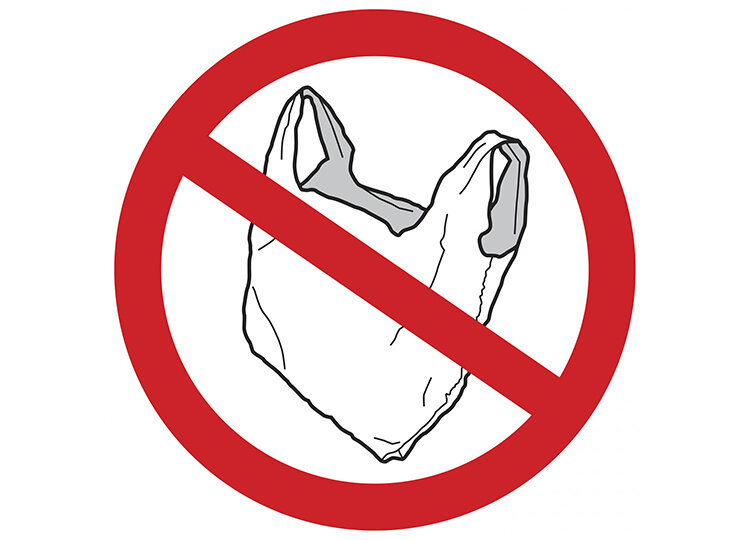Four new warehouses are setting up camp in Philadelphia, and clean air activists are concerned about the pollution of their vehicles.
The four new sites include an Amazon facility in Southwest, a redevelopment of the former Philadelphia Energy Solutions refinery in South Philly, a UPS site in the Northeast and a redevelopment of the Philadelphia Coke Company plant in Bridesburg. (Coke as in the industrial coal product, not Coca-Cola.)
“Transportation is the dominant source of pollution in the city,” says Clean Air Council Advocate Russell Zerbo. “Now we’re going to have these four permitted warehouse transportation hubs. That’s not going to improve air [quality].”
Between 1990 to 2017, according to a New York Times analysis, greenhouse gas emissions in Philadelphia from cars and trucks increased 22%. Today, motor vehicles produce 60% of Philadelphia’s total air pollution, while 21% of Philadelphians suffer from asthma.
“I fear that there is a potential that in the future [we] could be producing the same amount of air pollution as the old refinery.”
— Russell Zerbo, Clean Air Council advocate
Zerbo says the warehouses would worsen the city’s smog levels if not regulated. He and other advocates are requesting the city’s Air Management Services (AMS), an arm of the Philadelphia Department of Public Health, utilize a complex air permit to help regulate the number of vehicles at warehouse sites.
AMS has a network of 10 air monitoring stations that measure ambient levels of air pollutants throughout Philadelphia. But it is collecting little data on transportation pollution from warehouses.
Zerbo says the permit is one way to help measure and regulate motor pollution at the proposed sites and would address the pollution problem already present in the city.
Adopted in the 1970s by the city’s Air Control Pollution Board to regulate pollution from complex sources, the permit is known as Air Management Regulation 10, or AMR. The permit defines a complex source as a “facility, building, structure or installation, or combination thereof which emits, or in connection with which secondary or adjunctive activity is conducted which may emit, an air pollutant for which there is a National Ambient Air Quality Standard.”
The permit applies to a site that has a garage capacity of 250 cars or more within a metropolitan area, a garage capacity of 500 cars or more outside a metropolitan area, or a site that dispatches 100 motor vehicles per hour, 25 diesel buses per hour or 12 heavy-duty diesel vehicles per hour.
A city spokesperson says the permit isn’t underused, as Zerbo described it, but is only applied to facilities defined as a complex source.
Activists, however, want facilities like warehouses to be classified as complex sources. The group says the permit should be applied to Amazon, which have more than 50 sites in the Philadelphia region already.
Historically, the complex source permits have been used for parking garages at Temple and Thomas Jefferson universities. Once the permit is applied to warehouse facilities, Zerbo says it can reveal how much transportation pollution is happening right under our noses.
“I fear that there is a potential that in the future [we] could be producing the same amount of air pollution as the old refinery,” Zerbo says. “But it would be completely unregulated because it would be the infinite actions of an infinite amount of vehicles.”
The AMR permit can be one of several solutions to prevent public health ailments, but the city is very clear that only facilities classified as complex sources utilize the permit, and it’s unclear if that permit can be applied to warehouses in the future.
The city released the 2020 annual report by AMS in July. It includes a summary of the 10 air monitoring sites in Philadelphia and air pollution findings. The report finds an improvement in air quality, but a city spokesperson says the government is also exploring several other approaches for transportation pollution.
“While mobile sources are among the most difficult to regulate, AMS continues to identify novel ways of identifying problems and working to lessen mobile air pollution,” the spokesperson says.
Mobile sources of pollution, compared to stationary sources, are the dominant source of smog-causing nitrogen oxide in the city, according to the U.S. Environmental Protection Agency’s most recent National Emission Inventory.
Vehicles emit nitrogen oxide, which reacts with heat in the atmosphere to form ground-level ozone. Director of Environmental Health for the American Lung Association of the Mid-Atlantic Kevin Stewart says the combination is unhealthy.
“Those are both components of ozone, smog,” Stewart says. “And we know that according to the last ‘State of the Air’ report that we put out, the Philadelphia-Reading-Camden metro area ranks 21st worst in the country for ozone smog.”
Stewart says ozone smog contributes to short- and long-term effects for residents. As a result, groups with lung diseases such as asthma or chronic obstructive pulmonary disease (COPD) may see an increase in medication use and hospital admissions. But Stewart says ozone smog can affect more than your lungs.
“There are some studies that show people can have problems with metabolic disorders,” he says. “So, your glucose intolerance, diabetes, it can affect the central nervous system, it can be linked with brain inflammation and exacerbate cognitive decline.”
According to the city, solutions to regulating mobile source pollution include seeking alternative funding sources for the transportation sector of the air program, planning and coordinating with other authorities to reduce the impact of air pollution from the transportation sector, proposing an update of regulation for on-road and non-road sources (diesel buses to construction equipment) by the end of the year and more.
In the meantime, the Clean Air Council submitted about 100 comments and concerns regarding AMS’s Air Monitoring Network Plan in May. Zerbo says after focusing on the policy aspect of the proposed sites, activists will shift their energy on the surrounding communities.
“I envision that, in the future, there will be kind of individually addressed actions in Southwest, South Philly and in the Northeast, to get specific about each proposal,” Zerbo says. “I think it’s the next step.”


